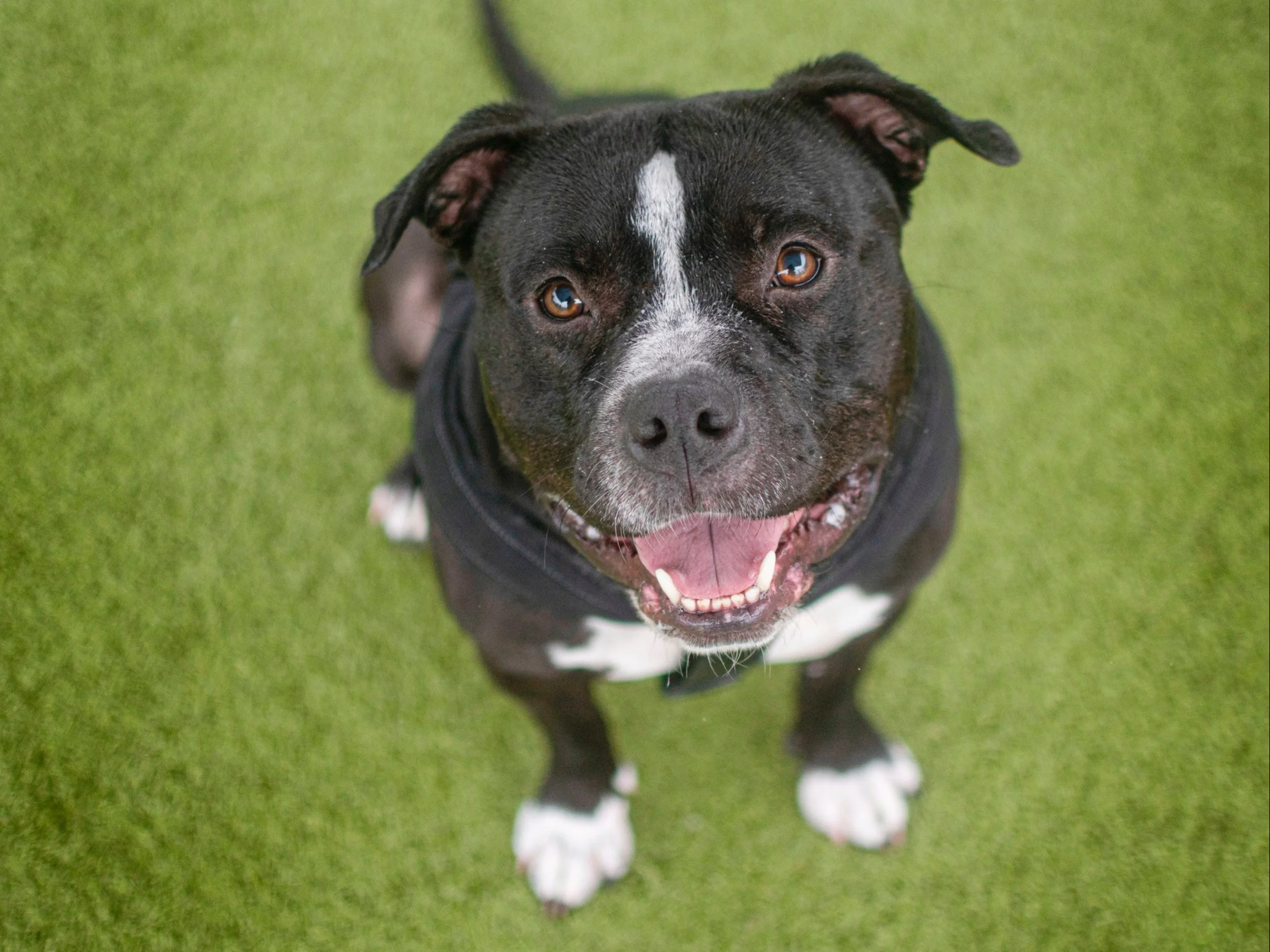
May is Mental Health Awareness Month, and here at the Dumb Friends League, we are always looking for ways to support the mental health of animals in our facilities. Shelter pets have often been through significant trauma, and during their stay with us, factors like high noise levels, strange smells, people walking by their kennels, and lack of a familiar or predictable routine can keep them in a high-stress state.
What does it mean to care for a non-human animal’s mental and emotional well-being? Many strategies are similar to what we do for ourselves. For all animals, we want to limit stressful stimuli; allow time for rest and physical activity; promote soothing, fun, and natural behaviors; provide social connection; and carefully consider the needs of individuals based on their specific background, health, and behavior.
Quiet Hours
One way we care for the mental health of shelter pets is through a daily quiet hour. For dogs who are stressed by the constant activity of the shelter environment, we turn off the lights, shut the blinds, and limit staff and volunteer entry into their kennel area from 12:00 – 1:00 p.m. each day. This gives them a restful reset so they can put their best paw forward while meeting potential adopters.
Enrichment
The League also cares for the mental health of shelter pets through regular enrichment. While enrichment looks different for each species and individual, these activities promote mental stimulation and give animals something engaging to focus on other than their stress – the way a good book or video game might for humans.
For dogs, we spend time shaping new behaviors through training as a learning outlet. We also take them for daily walks, provide them with opportunities to play off-leash, and have recently created an outdoor agility course, which high-energy dogs like Tater (pictured here) really enjoy. Additionally, League staff and volunteers offer food-based enrichment where kibble is hidden inside cardboard paper towel rolls, paper bags, and other objects for dogs to search for and discover.
For small mammals like rabbits, we rotate different vegetables into their meals for a variety of tastes and chewable textures. Bunnies are also given time to roam in bigger spaces, like visiting rooms, so they can stretch their legs and explore new environments.
When possible, cats at the League are housed in colony rooms with other cats so they have the opportunity for social bonding. We also provide plenty of toys and additional play therapy activities for individuals who might benefit. To learn more about feline enrichment, visit our new Cat Enrichment Room at our Veterinary Hospital at CSU Spur, where we rotate various types of enrichment each day.
Behavior-Medical Treatment Program
Recently, we’ve begun to integrate the use of medications – such as Trazodone, Gabapentin, and Fluoxetine – with behavioral support. League veterinarians collaborate with our Behavior team to treat animals experiencing fear, separation anxiety, overgrooming, repetitive behaviors, extreme high energy, and other harmful behaviors commonly observed in shelter environments.
Adopters are given a 2-week supply of any medications their new pet is taking and instructed to follow up with their veterinarian to assess if the medication is still needed outside the shelter. While this program is still developing, we’ve seen success in helping animals cope while they wait to find a new home.
Supporting your pet’s mental and emotional health is essential to their well-being. For more tips on how to enrich your pet’s quality of life, visit our behavior resource library.
